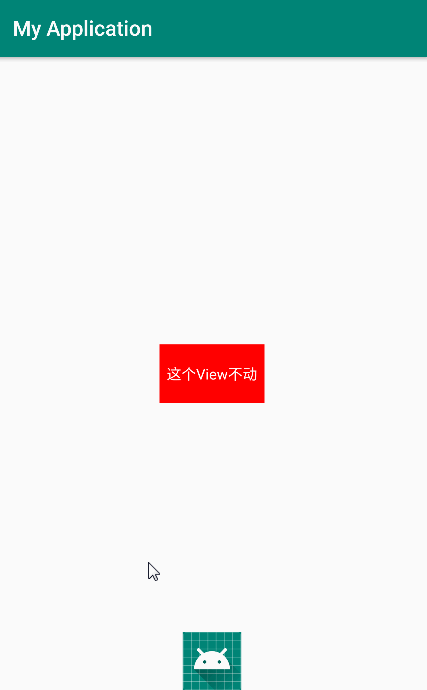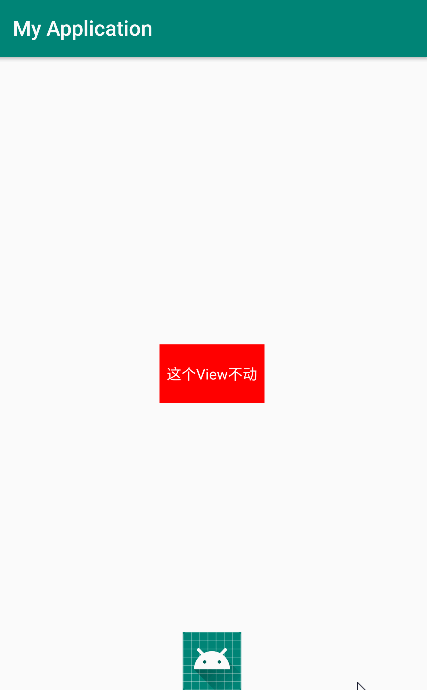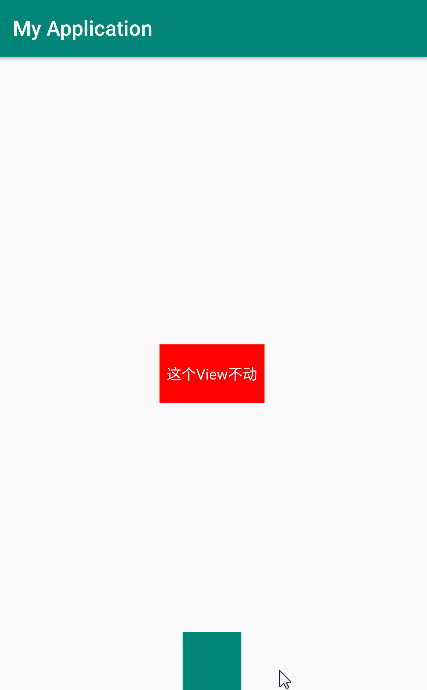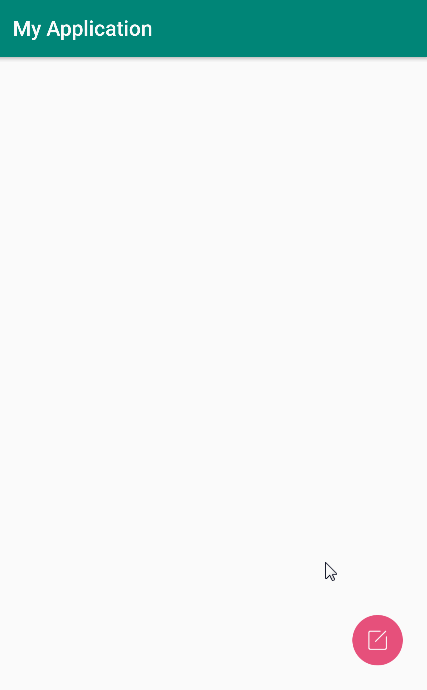MotionLayout 是 ConstraintLayout 2.0 版本引入进来的,目前还在测试版本中,但感觉还挺有意思的,就写一篇记录一下。
MotionLayout 类继承自 ConstraintLayout 类,允许你为各种状态之间的布局设置过渡动画。由于 MotionLayout 继承了 ConstraintLayout,因此可以直接在 XML 布局文件中使用 MotionLayout 替换 ConstraintLayout。MotionLayout 是完全声明式的,你可以完全在 XML 文件中描述一个复杂的过渡动画而无需任何代码。
MotionLayout 与 ConstraintLayout 不同的是 MotionLayout 需要链接到一个 MotionScene 文件。使用 MotionLayout 的 app:layoutDescription 属性将 MotionLayout 链接到一个 MotionScene 文件。另外,MotionLayout 所有的直接子 View 需要指定 id,不然会报错:
1 | All children of ConstraintLayout must have ids to use ConstraintSet. |
简单使用
- 起始状态:
1
2
3
4
5
6
7
8
9
10
11
12
13
14
15
16
17
18
19
20
21
22
23
24
25
26
27
28
29
30
31
32
33
34<android.support.constraint.motion.MotionLayout
xmlns:android="http://schemas.android.com/apk/res/android"
xmlns:app="http://schemas.android.com/apk/res-auto"
android:layout_width="match_parent"
android:layout_height="match_parent"
android:id="@+id/motionLayout"
app:layoutDescription="@xml/activity_main_motion_scene">
<TextView
android:id="@+id/button"
android:layout_width="100dp"
android:layout_height="56dp"
android:text="这个View不动"
android:textColor="#fff"
android:gravity="center"
android:background="#f00"
app:layout_constraintLeft_toLeftOf="parent"
app:layout_constraintRight_toRightOf="parent"
app:layout_constraintTop_toTopOf="parent"
app:layout_constraintBottom_toBottomOf="parent"/>
<ImageView
android:id="@+id/image"
android:layout_width="56dp"
android:layout_height="56dp"
android:src="@mipmap/ic_launcher"
android:background="@color/colorPrimary"
app:layout_constraintBottom_toBottomOf="parent"
app:layout_constraintLeft_toLeftOf="parent"
app:layout_constraintRight_toRightOf="parent"
app:layout_constraintTop_toTopOf="parent"
app:layout_constraintVertical_bias="1"/>
</android.support.constraint.motion.MotionLayout> - 结束状态:
1
2
3
4
5
6
7
8
9
10
11
12
13
14
15
16
17
18<android.support.constraint.motion.MotionLayout
xmlns:android="http://schemas.android.com/apk/res/android"
xmlns:app="http://schemas.android.com/apk/res-auto"
android:id="@+id/motionLayout"
android:layout_width="match_parent"
android:layout_height="match_parent"
app:layoutDescription="@xml/activity_main_motion_scene">
<ImageView
android:id="@+id/image"
android:layout_width="48dp"
android:layout_height="48dp"
app:layout_constraintLeft_toLeftOf="parent"
app:layout_constraintRight_toRightOf="parent"
android:layout_marginTop="100dp"
app:layout_constraintTop_toTopOf="parent"/>
</android.support.constraint.motion.MotionLayout> - MotionScene:文件名 activity_main_motion_scene.xml,存放在 res/xml 目录下。看下效果:
1
2
3
4
5
6
7
8
9
10
11
12
13
14
15
16
<MotionScene xmlns:android="http://schemas.android.com/apk/res/android"
xmlns:app="http://schemas.android.com/apk/res-auto">
<Transition
app:constraintSetStart="@layout/activity_main_scene1"
app:constraintSetEnd="@layout/activity_main_scene2"
app:duration="1000">
<OnClick
app:clickAction="toggle"
app:targetId="@id/image" />
</Transition>
</MotionScene>
属性讲解
MotionLayout 会自动检测这两个场景中具有相同 id 的 View 的属性差别,然后针对这些差别属性应用过渡动画。
MotionLayout 除了支持一下的标准属性外,还支持全部的 ConstraintLayout 属性。
- android:visibility
- android:alpha
- android:elevation
- android:rotation
- android:rotationX
- android:rotationY
- android:scaleX
- android:scaleY
- android:translationX
- android:translationY
- android:translationZ
MotionScene 文件的根元素是 MotionScene。在 MotionScene 元素中使用 Transition 子元素来描述一个过渡,使用 Transition 元素的 app:constraintSetStart 属性指定起始场景的布局文件,使用 app:constraintSetEnd 指定结束场景的布局文件。在 Transition 元素中使用 OnClick 或者 OnSwip 子元素来描述过渡的触发条件。使用 app:duration 指定动画时间,app:motionInterpolator 指定差值器,取值有 linear、bounce 等等。
OnClick 元素的属性:
- app:targetId:Id 值,设置用来触发过渡的那个 View 的 Id,例如:@id/image。
- app:clickAction:设置点击时执行的动作,有 5 个可选项:
- toggle:在 Start 场景和 End 场景之间循环的切换。
- transitionToEnd:过渡到 End 场景。
- transitionToStart:过渡到 Start 场景。
- jumpToEnd:跳到 End 场景(不执行过渡动画)。
- jumpToStart:跳到 Start 场景(不执行过渡动画)。
OnSwip 拖动操作,由于拖动操作涉及的交互较为复杂,这里就不讲述了,有兴趣的同学可以自己了解。
代码控制
代码开启动画,切换到起始状态:
1 | motionLayout.transitionToStart(); |
同样,切换到终止状态:
1 | motionLayout.transitionToEnd() |
设置动画进度:
1 | motionLayout.setProgress(progress) // 取值 0 ~ 1 |
监听动画:
1 | motionLayout.setTransitionListener(object : MotionLayout.TransitionListener { |
在 MotionScene 文件中定义约束
我们可以在 MotionScene 元素中使用 ConstraintSet 子元素定义一个场景约束集,并在 ConstraintSet 元素中使用 Constraint 元素定义单个 View 的属性约束。
将 activity_main_motion_scene.xml 改成如下:
1 | <MotionScene xmlns:app="http://schemas.android.com/apk/res-auto" |
效果如下:
这种写法还支持自定义属性:在 Constraint 元素中使用 CustomAttribute 子元素来指定自定义属性。改成如下代码:
1 | <MotionScene xmlns:app="http://schemas.android.com/apk/res-auto" |
效果如下:
所以如果有使用到 CustomAttribute,则最好将约束变化定义在 MotionScene xml 中。
小结
利用 MotionLayout 实现了一个普遍的按钮点击动画:
效果还不错,只是如果前后动画的插值器不一致,或有其他定制的需求时,MotionLayout 是否能满足呢?
本文只是简单介绍了一下 MotionLayout 的使用,它其实还有很多东西,比如 OnSwipe,以及 app:transitionEasing、app:transitionPathRotate、app:drawPath 等一些比较有意思的属性,有空的时候可以再多看看。MotionLayout 当前还只是测试版,期待正式版本出来的那一天!